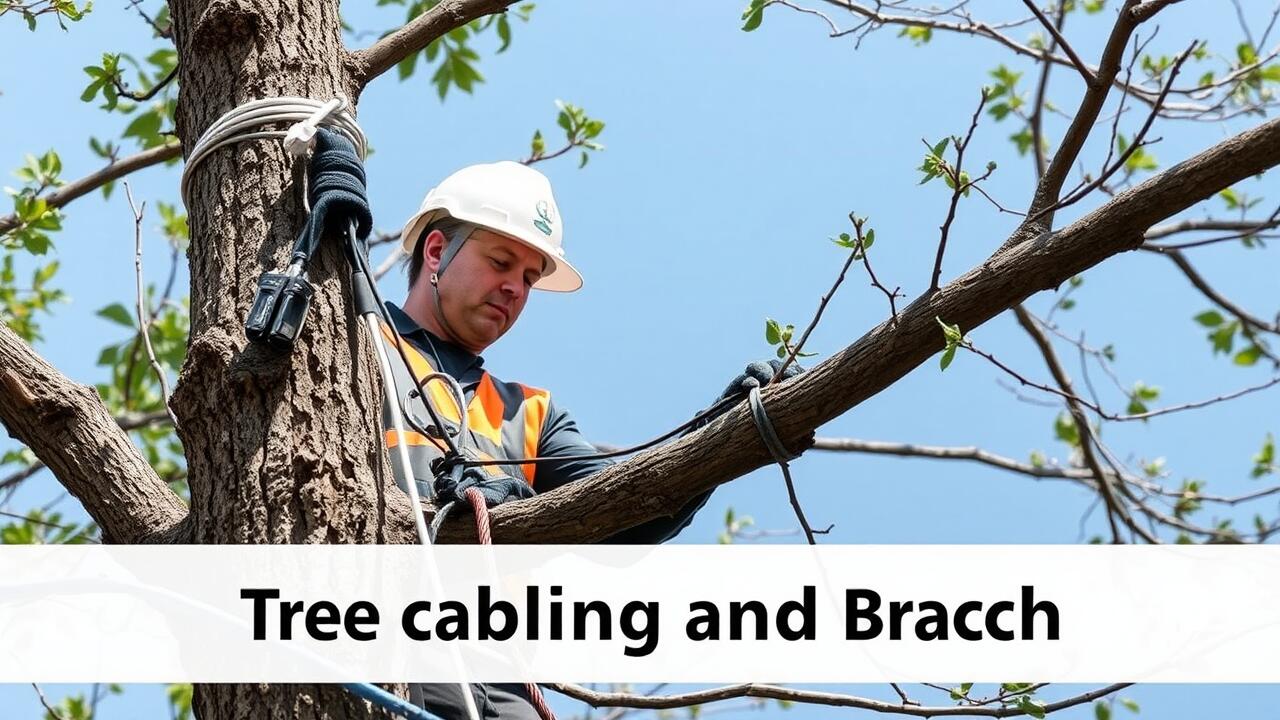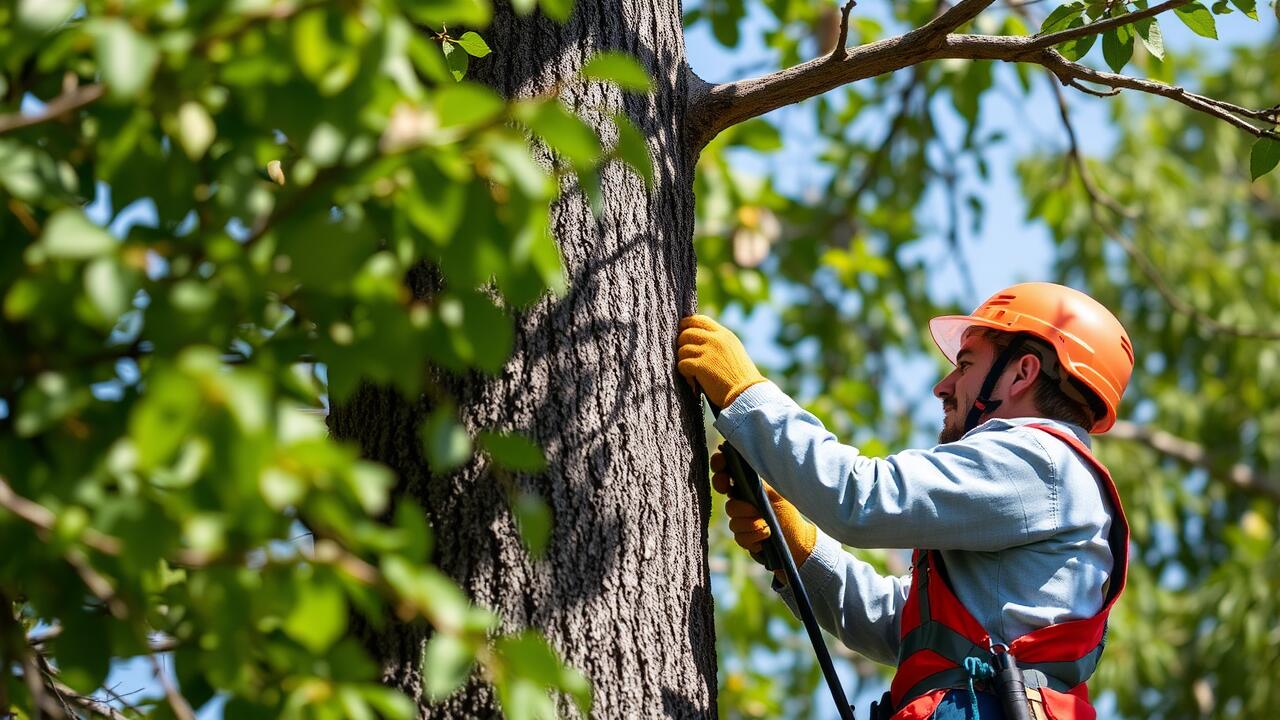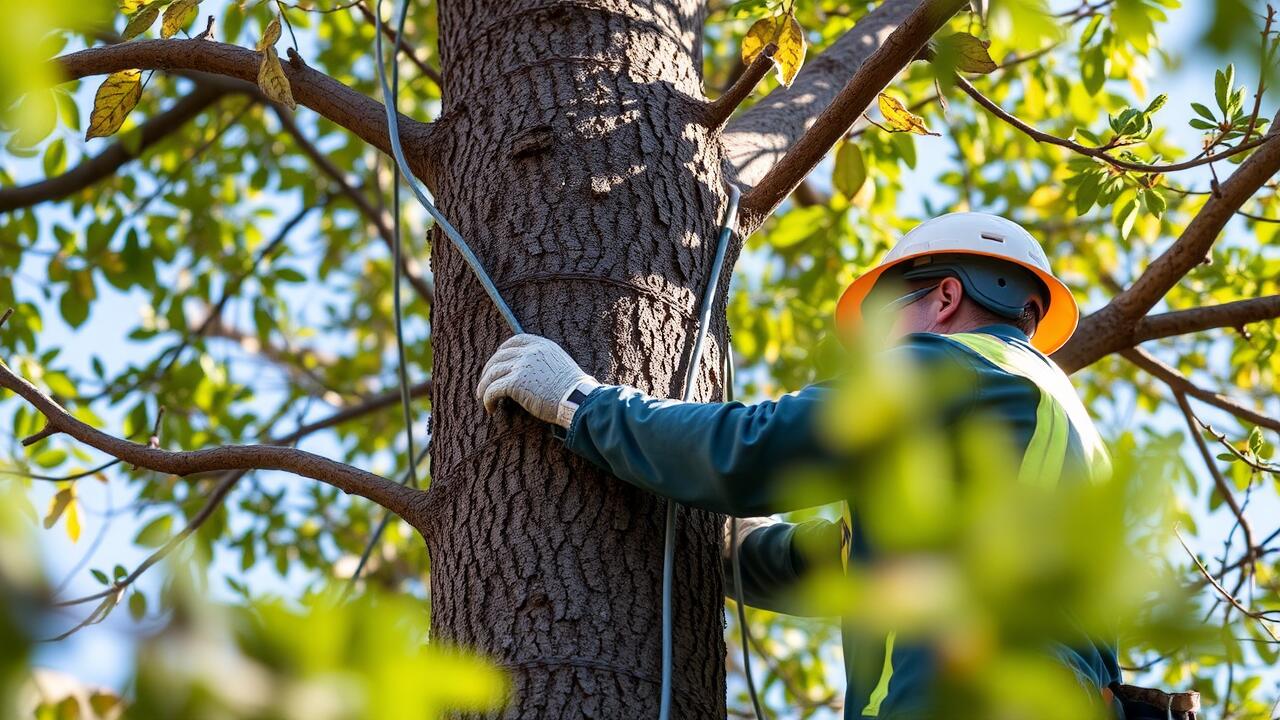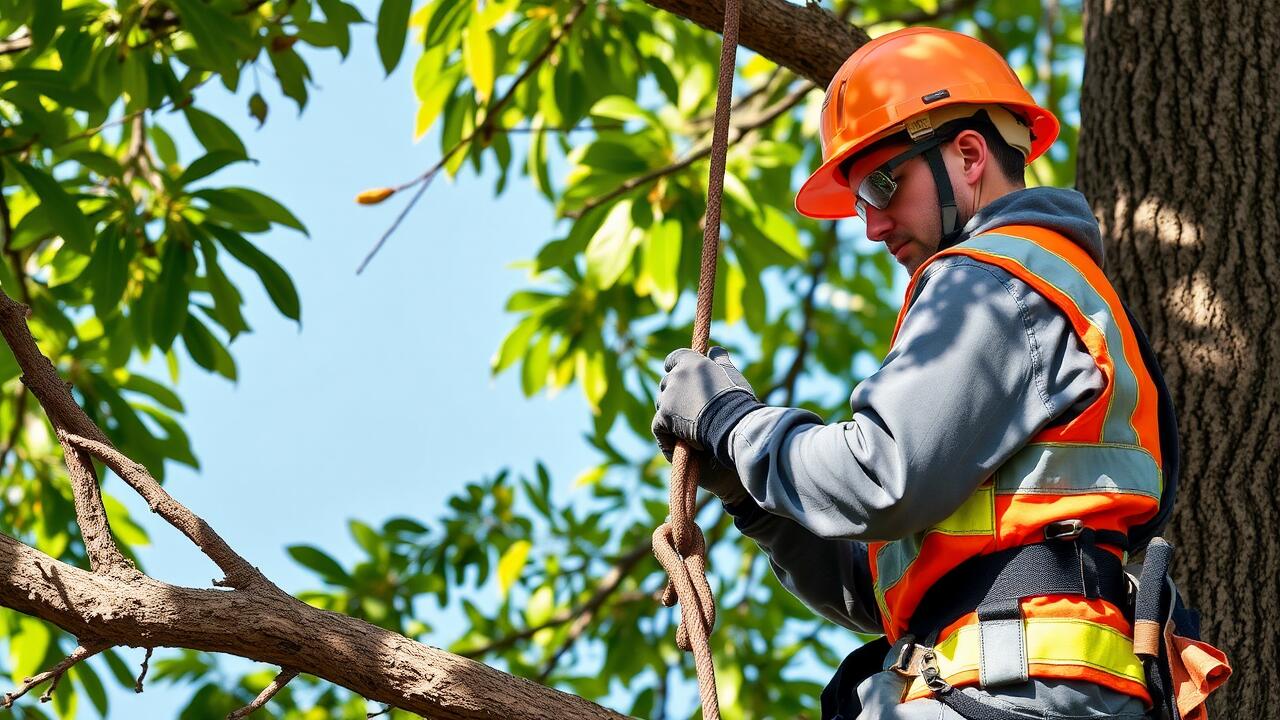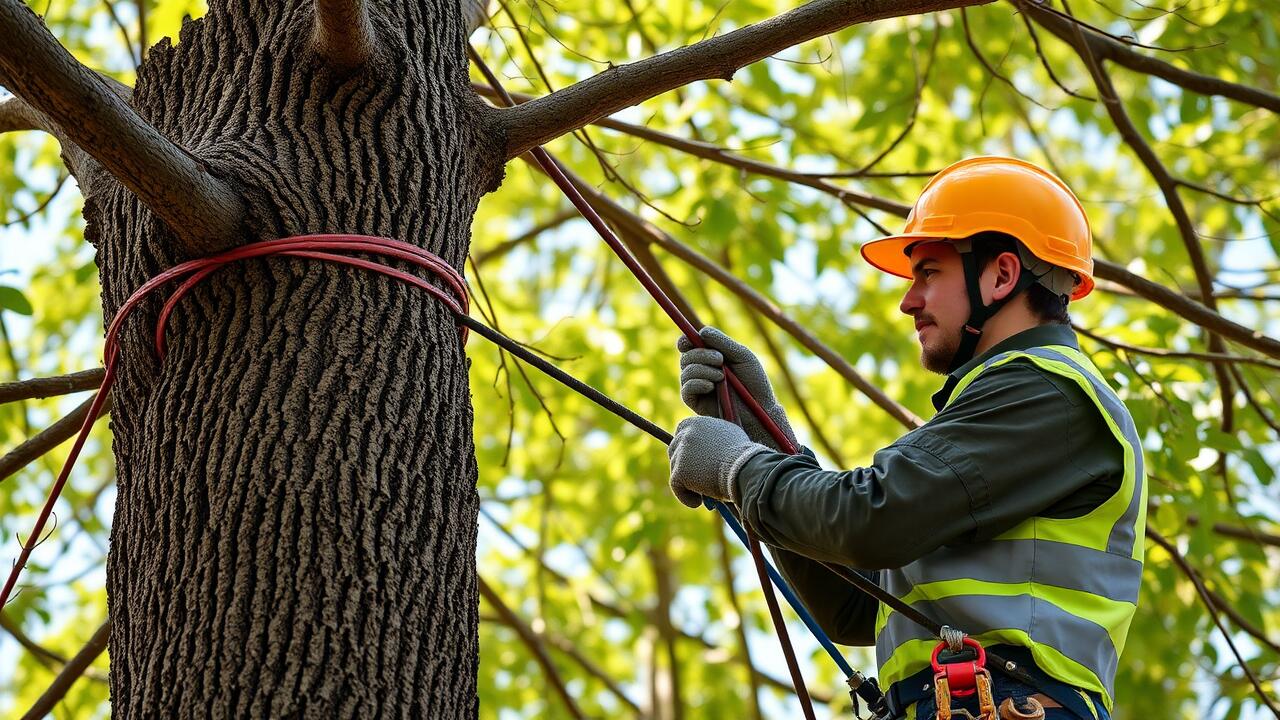
Installation Techniques for Cables
When installing cables for tree support, it is crucial to assess the tree’s overall health and structural integrity. Start by selecting the appropriate cable type based on the tree species and its specific needs. A common technique involves placing the cable at a height that offers maximum support while allowing for natural movement. Ensure the cable is fastened securely to the tree using specialized hardware. This method minimizes stress on the bark and reduces the risk of injury to the tree.
Additionally, precise placement of cables is essential to achieve effective support. The use of bracing systems can enhance stability, especially for trees with weak or structurally compromised branches. Professionals, such as those specializing in Tree Cabling and Bracing Buckhead, Atlanta, recommend using materials that can withstand environmental stresses while promoting the tree's ability to flourish. Properly installed cables not only stabilize the tree but also help it adapt to wind and weight loads through its natural growth processes.
Best Practices for Effective Support
When implementing tree support systems, selecting the right materials and installation techniques is crucial. High-quality cables made from durable materials such as stainless steel provide strength and reliability. Proper installation techniques ensure that support structures are seamlessly integrated with the tree's natural form. It's critical to avoid cables that are overly tight, as this can cause damage to the tree's bark and impede growth. Regular monitoring of the cables and brackets will help maintain their effectiveness and the health of the tree.
In Buckhead, Atlanta, tree cabling and bracing should take local environmental conditions into account. Factors such as wind patterns, soil types, and tree species can influence the choice of support system. Consult with local arborists who understand the specific needs of trees in the region. They can provide guidance on the optimal placement of cables to balance support and aesthetics. Following these best practices promotes the longevity of the tree while enhancing its structural integrity.
Maintenance of Tree Support Cables
Maintaining tree support cables is essential for ensuring the long-term health and stability of trees. Regular inspections should be scheduled to check for signs of wear, corrosion, or loosening. Attention to cable tension is equally important, as cables that are too loose can fail to provide adequate support. Pruning should be done carefully to avoid unnecessary stress on the cables during growth periods.
In regions like Buckhead, Atlanta, where environmental factors can impact tree health, the need for proper maintenance becomes even more pronounced. After storms or heavy winds, it is advisable to assess the cables for damage or strain. Professional services specializing in Tree Cabling and Bracing Buckhead, Atlanta can provide expert evaluations and timely repairs, which are vital for the overall integrity of both the support system and the trees themselves.
Regular Inspection and Repair Tips
Regular inspection of tree support cables is crucial for ensuring the long-term stability and health of the trees. Inspect cables for signs of wear, fraying, or corrosion. Evaluate the attachment points to ensure they remain secure and free from damage. Regular assessments may highlight issues that need immediate attention, preventing potential failures that could harm the tree or surrounding structures. Schedule inspections at least once a year, or more frequently after severe weather events.
Addressing minor issues promptly can extend the life of your cable system. For example, if you notice any signs of loosening, tighten the fittings carefully to avoid damaging the tree. In cases where damage is significant, consider consulting professionals specializing in Tree Cabling and Bracing Buckhead, Atlanta. They can provide expertise in repair or replacement, ensuring that trees receive the necessary support without causing additional harm.
Environmental Impact of Cable Materials
The environmental impact of cable materials used in tree support systems cannot be overlooked. Different materials possess varying ecologies, influencing both the trees they support and the surrounding environment. For example, synthetic cables may offer high durability but can take long periods to decompose. In contrast, natural fibers, while more biodegradable, might lack the strength required for some applications. Understanding the implications of these materials helps arborists and landscapers make informed choices that support tree health while considering eco-sustainability.
When considering tree support solutions in urban areas like Tree Cabling and Bracing Buckhead, Atlanta, the choice of materials also affects local ecosystems. Utilizing eco-friendly options goes beyond mere functionality; it promotes a healthier environment for trees and wildlife. Materials like recycled metals or sustainably sourced natural fibers can be beneficial. Opting for such alternatives can significantly reduce negative impacts on local flora and fauna, fostering coexistence while maintaining the structural integrity of trees in bustling urban landscapes.
Eco-Friendly Options in Tree Support
For those committed to sustainability, eco-friendly materials for tree support are increasingly available. Options such as biodegradable synthetic ropes and organic fiber cables provide the strength needed without compromising environmental integrity. Using these materials not only helps in maintaining the health of trees but also minimizes the ecological footprint often associated with traditional metal cables. Awareness of these alternatives can guide tree care professionals and homeowners in making responsible decisions.
Tree Cabling and Bracing Buckhead, Atlanta, emphasizes the importance of selecting materials that align with both practical requirements and ecological considerations. Alongside biodegradable options, some companies offer recycled metal cables, which utilize existing resources and reduce waste. Incorporating such sustainable practices into tree support strategies ensures that the trees receive necessary assistance while fostering a healthier environment for future generations.
FAQS
What are the different types of cables used in tree support?
The most commonly used types of cables for tree support include synthetic ropes, steel cables, and natural fiber ropes, each offering different levels of strength and flexibility.
How do I choose the right cable for my tree support?
To choose the right cable, consider factors such as the tree species, the weight of the branches being supported, environmental conditions, and the longevity of the material.
How often should tree support cables be inspected?
Tree support cables should be inspected at least once a year, but more frequent inspections may be necessary after severe weather events or if the tree shows signs of stress.
Can tree support cables harm the tree over time?
Yes, if not installed or maintained properly, cables can damage the tree by causing wounds or restricting growth. Regular inspection and adjustment can help minimize these risks.
Are there eco-friendly options for tree support cables?
Yes, there are eco-friendly options available, such as biodegradable natural fiber ropes and recycled synthetic materials, which can provide support while minimizing environmental impact.
